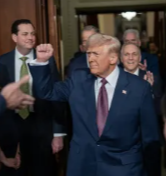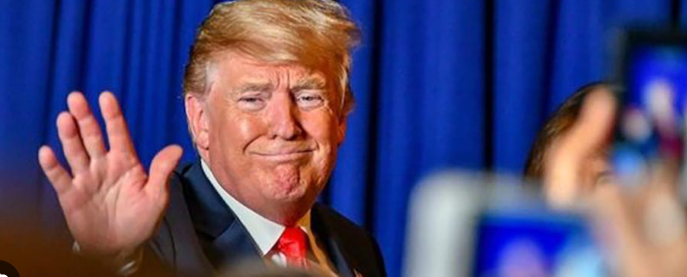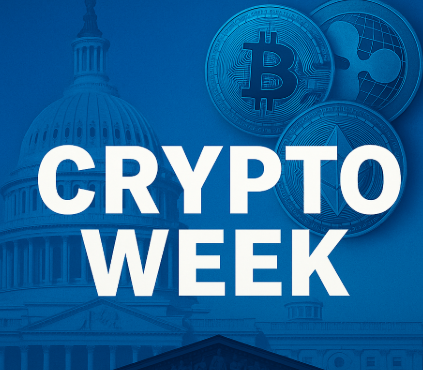Governors and rising contenders across both parties are using the 2026 midterms to test national appeal and shape the early contours of the 2028 presidential field.
What to Know:
- Most 2016 forecasts gave Hillary Clinton an overwhelming chance of victory.
- Donald Trump’s win exposed blind spots in traditional polling methods.
- A group of hidden or “quiet” voters defied poll-based assumptions.
- Digital sentiment analysis detected the emotional energy that polls missed.
- Campaigns now rely on polling, analytics, and sentiment data to see the full picture.
In the final days before the 2016 election, the story seemed settled. Major media outlets and polling aggregators predicted a Clinton victory with near certainty. The New York Times gave her an 85% chance of winning, HuffPost said 98%, and the Princeton Election Consortium claimed the odds were virtually guaranteed.
Donald Trump's defeat was a foregone conclusion, according to every data model, national survey, and cable news panel.
But the results told a different story. Trump not only won the Electoral College with 306 votes to Clinton’s 232, but he did so by flipping key states that Democrats had considered safe. The result shook the credibility of pollsters, forecasters, and political strategists alike. The profession built on numbers suddenly looked blind.
Why Polling Failed
Polling in 2016 was based on what people were willing to say, not what they actually believed or would do. It relied on respondents who answered their phones and trusted institutions conducting the surveys. That was the first blind spot.
Even Trump's own campaign encountered a similar issue. Their internal polling, on which they spent approximately $100,000 weekly, yielded data consistent with Nate Silver's findings, indicating Trump was trailing. The models were accurate at measuring sentiment among likely voters but not the emerging base that would redefine the election.
Polls also couldn’t keep up with the pace of the modern news cycle. In an era of social media outrage and constant political drama, public opinion could swing in hours. Polls, designed to capture steady attitudes, were outdated the moment they were released.
The Hidden Voter
The idea of a “shy Trump voter” became one of the most discussed theories after the election. These were people who told pollsters one thing but voted differently, often because they didn’t want to face judgment for supporting Trump.

Image by DALL-E
Many non-college-educated white, irregular, and working-class populist voters had not participated in surveys or elections before 2016, leading them to be overlooked in polling. Trump himself called it “Brexit times five,” referring to the unexpected British vote to leave the European Union earlier that year. He was right to make the comparison. Like Brexit, the 2016 election was powered by frustration with globalization, political elites, and social change.
New Voter Types Emerge
Trump didn’t just attract Republicans. He created new voter identities that traditional polling had no framework to capture.
- Disaffected populists who felt abandoned by both parties.
- Cultural backlash voters who viewed political correctness as a personal attack.
- Silent resistors who rarely posted or polled but voted in high numbers.

Image by DALL-E
These groups were driven more by emotion than ideology. They voted on gut instinct, not policy detail. They didn’t fit into demographic categories like “swing voters” or “independents,” because their motivation was cultural rather than political.
How Digital Sentiment Changed the Game
While public pollsters were chasing phone calls, Trump’s digital team was watching online behavior. Brad Parscale, his digital director, used Facebook, Google, and Twitter data to track emotional trends. Instead of asking voters what they thought, the campaign observed what they felt.
Parscale later said the key was “reading the sentiment before the pollsters asked the question.” His team monitored millions of online posts to measure tone, anger, excitement, and frustration. When positive sentiment toward Trump spiked, it often predicted fundraising surges or crowd enthusiasm before a rally even began.
A highly impactful finding was "The Backlash Parent," a demographic of middle-aged Americans expressing discontent with cultural discussions surrounding gender, race, and education. This group didn’t follow politics but reacted strongly to moments that felt like moral overreach or government intrusion. Traditional polls never saw them coming.
Behavioral Momentum vs. Static Data
The 2016 election showed that people's opinions are not static; rather, they are shaped by events. Those reactions can swing elections faster than any poll can track. Polls freeze a moment in time, but behavior moves constantly. 
Campaigns learned that to understand voters truly, they needed to blend three forms of data. A single viral clip, a debate comment, or a protest can shift how millions feel about a candidate overnight.
The Numbers Behind the Upset
Trump won 47% of the national vote compared to Clinton’s 48%, yet his votes were distributed in the right states. He carried 58% of white voters overall, including 70% of non-college white men and 60% of non-college white women.
Together, these groups made up about 70% of the electorate. Clinton’s share of the Black vote dropped from 93% for Obama in 2012 to 88%, and her expected surge in Hispanic turnout didn’t materialize.

The outcome represented not merely a partisan shift, but a demographic realignment. Voters who had been disengaged from politics for decades suddenly rejoined the process, driven not by civic duty but by cultural frustration.
Wrap Up
Post-election, pollsters faced criticism for their inaccurate predictions. However, some data experts, particularly those involved in behavioral and psychographic targeting like Cambridge Analytica, accurately foresaw how emotional intensity could influence voter turnout.
The election made clear that political data had entered a new era. Campaigns could no longer rely solely on surveys and spreadsheets. Understanding emotion, tone, and behavior in real time would become the new currency of persuasion.
The 2016 election was more than a victory for Donald Trump over Hillary Clinton. It marked a triumph of emotion and digital engagement over traditional statistics, signaling the rise of a new, highly influential, and previously immeasurable voter demographic.








.png)